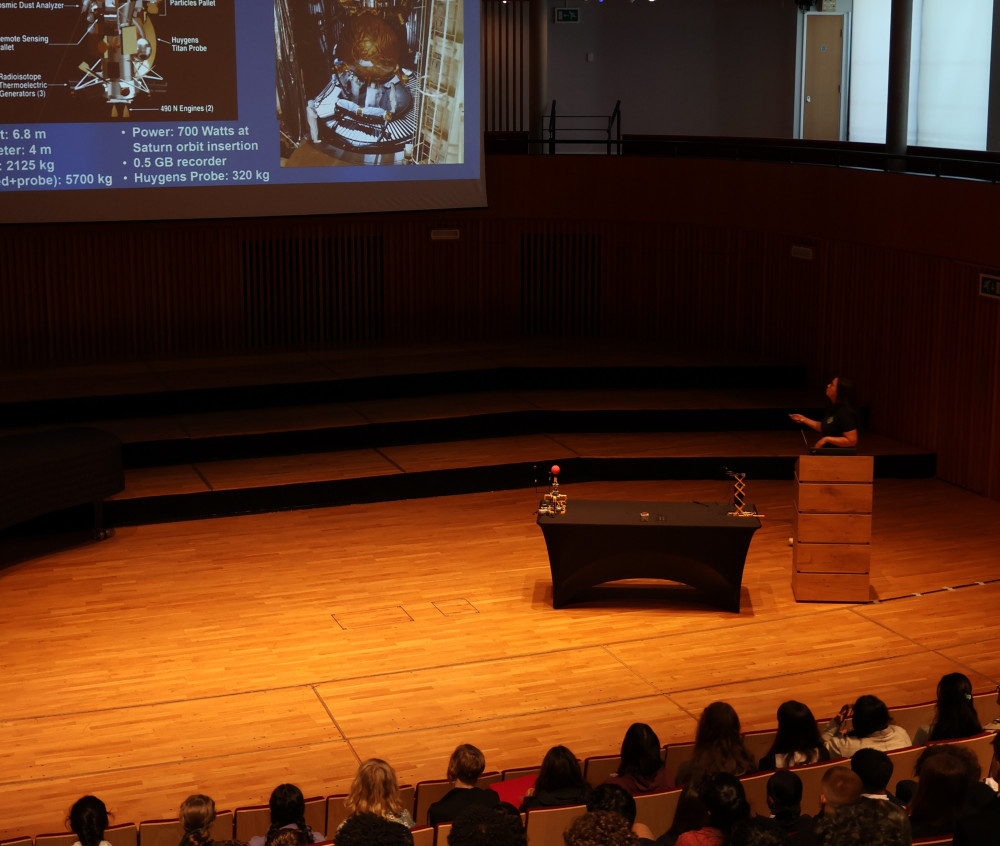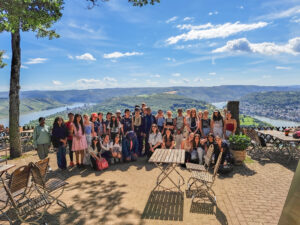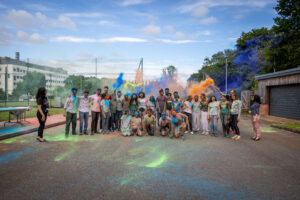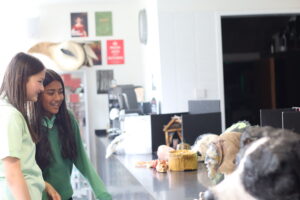On 21 September, Lower Sixth physics students attended three lectures given by the University of Birmingham’s own Dr Leah-Nani Alconcel, Prof Amaury Triaud and Dr Miriam Watson: experts in space exploration, exoplanetary science and particle physics respectively.
Dr Leah-Nani Alconcel discussed her career path from a degree in chemistry to helping NASA build the Cassini spacecraft, describing its mission to Saturn including some exciting photographs it collected of Enceladus’ geysers. She then gave a brief overview of the different stages of building a spacecraft and explored the dilemmas facing a spacecraft engineer including the use of RTGs (nuclear power) or solar panels for power.
Prof Amaury Triaud opened his talk with an explanation of the different theories for the beginning of life on earth highlighting particularly the theory of panspermia (life originated elsewhere and was deposited by a meteor collision) and chemosynthetic theories (chemical reactions on the early earth provided the building blocks for life). Dr Triaud then explained the signs that exoplanetary scientists look for when searching for life. He explained how the James Webb telescope has been a huge help for the search for biosignatures, namely oxygen, as different wavelengths of light are absorbed by different chemicals, and this can help to create a breakdown of which gases are present in a planet’s atmosphere.
Dr Miriam Watson opened her talk by outlining why exactly her and her colleagues at CERN’s LHC want to accelerate particles in the first place, explaining how the kinetic energy of the particles they accelerate and collide gets converted into the mass of the new particles being created thanks to everyone’s favourite equation E=mc2! Dr Watson then explained the route the particles take through the complex system, explaining the role of the various subsections of the accelerator and highlighting in particular the superconducting magnets used to accelerate the charged particles. To close, Dr Watson covered the standard model of particle physics and explained the role of the different gauge bosons and the famous Higgs Boson before answering questions on Supersymmetry and the possibility of communicating with different dimensions.
Many thanks to the lecturers for giving up their time to talk to us and to the physics department for organising such an interesting day! Rowan and Derwent
